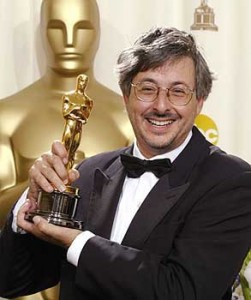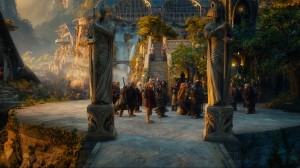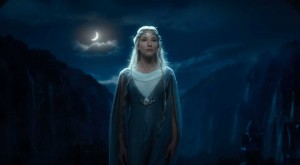
For director of photography Andrew Lesnie, The Hobbit: An Unexpected Journey represents more than a decade of work with director Peter Jackson on films based on the works of revered English fantasy author J.R.R. Tolkien. This era started with the first film in the landmark Lord of the Rings trilogy, The Fellowship of the Ring, released in 2001, and encompasses a revolutionary period of advancing moviemaking technology. The adoption of digital cinematography and the ongoing perfection of CG effects are among the most notable elements of this time.
Lesnie, who won an Oscar for best cinematography for Fellowship, has been there for all of it. While all three of the Lord of the Rings film installments were almost entirely lensed on film, The Hobbit, a prequel to the Middle Earth saga, was largely shot on 30 state-of-the-art RED digital cameras that were custom made for the shoot.
 There were also two big new challenges for the New Zealand DP. The first was the use of 3D for the first time in his career. The second was shooting the film at 48 frames per second, double what has been the norm. Until now, 48 fps has been used for a few amusement park attractions. Jackson felt it would add more satisfying detail to the screen image of The Hobbit. Not all critics have agreed that this is an improvement, but in all likelihood the use of 48 fps image capture and projection will become more frequent in the future, and Lesnie will be remembered as having been the first cinematographer to employ it.
There were also two big new challenges for the New Zealand DP. The first was the use of 3D for the first time in his career. The second was shooting the film at 48 frames per second, double what has been the norm. Until now, 48 fps has been used for a few amusement park attractions. Jackson felt it would add more satisfying detail to the screen image of The Hobbit. Not all critics have agreed that this is an improvement, but in all likelihood the use of 48 fps image capture and projection will become more frequent in the future, and Lesnie will be remembered as having been the first cinematographer to employ it.
Other camera techniques Lesnie worked with in The Hobbit have also become more complex. One was a further evolution in “on-set motion capture,” used to greatest effect in the scenes where Andy Serkis returns as the Gollum character. Another is “slave motion control” photography. This technology makes actors seem to be different sizes in scenes and seem appear to be together in frame, when in actuality, they were shot separately. The technique was used mainly in the expansive early sequence where 13 dwarves suddenly arrive at Bag End for dinner with Bilbo, played by Martin Freeman, and Ian McKellen as Gandalf, a very tall wizard, also drops by. At least that’s how the audience sees it. Actually, one camera is operating and a second camera is the slave. The actors are on two different sets filming the same scene.

Throughout, Lesnie balanced technological imperatives with artistic considerations. “There was a lot of room for improvisation on the set of The Hobbit, in both performance and coverage,” he said. “Even with the huge amount of preparation we’d done, it was important to remain open to a good idea or a happy accident. That’s one reason why we wanted the camera systems to be as flexible as possible, so we could exploit an opportunity if one presented itself.”
Over the 12-year span of making the Lord of the Rings films and The Hobbit, Lesnie was also the DP on Jackson’s remake of King Kong. And last year, he was DP for director Rupert Wyatt’s Rise of the Planet of the Apes, which represented a big leap in the use of mocap for the role of the human-like Caesar, also played by Serkis. Other DP credits include I Am Legend, starring Will Smith, and The Last Airbender directed M. Night Shyamalan.





